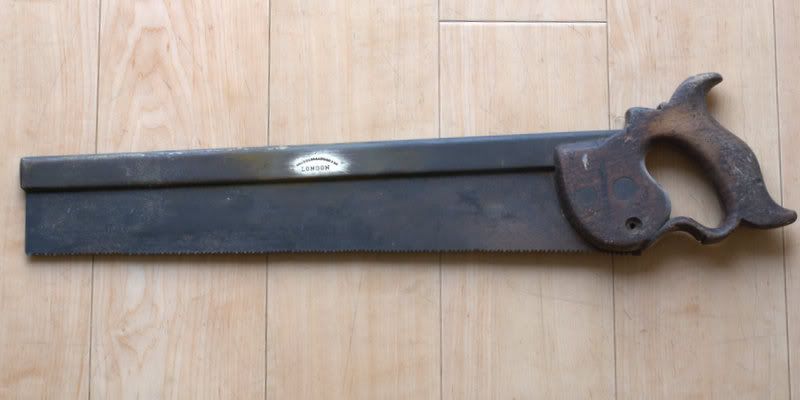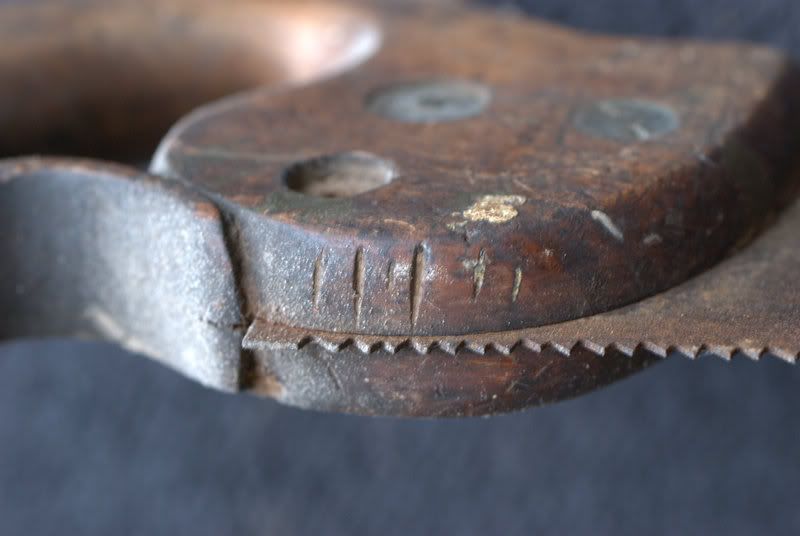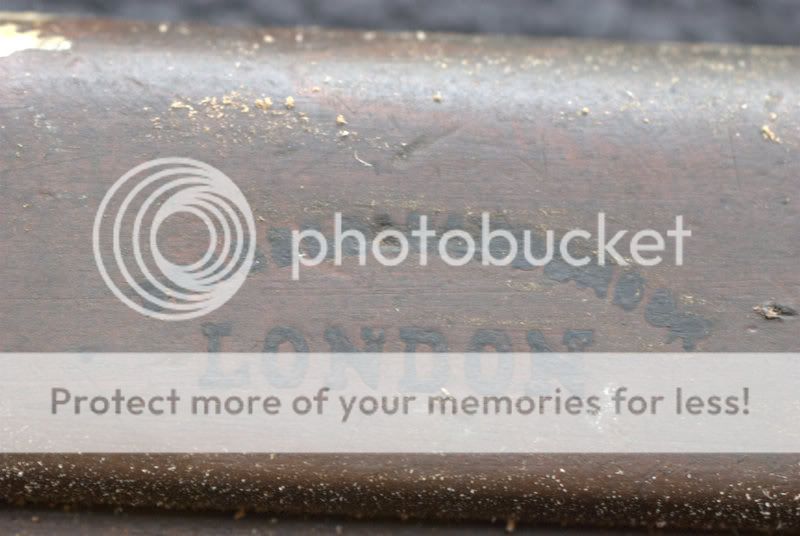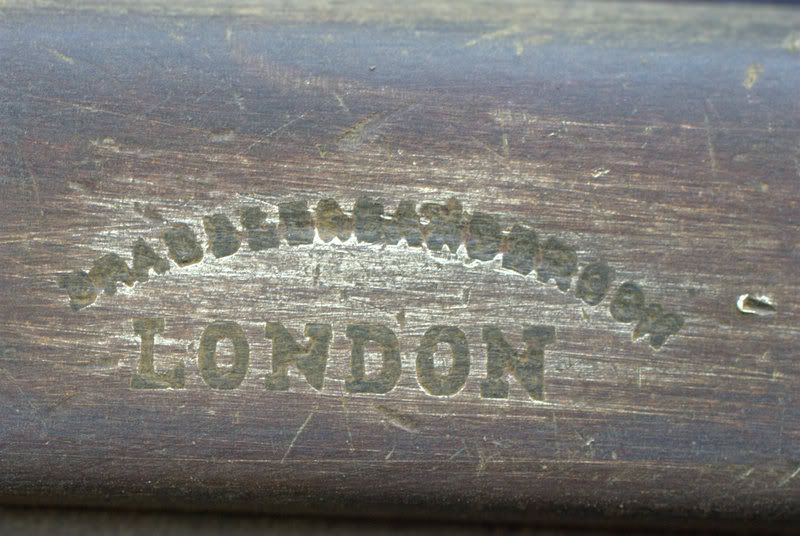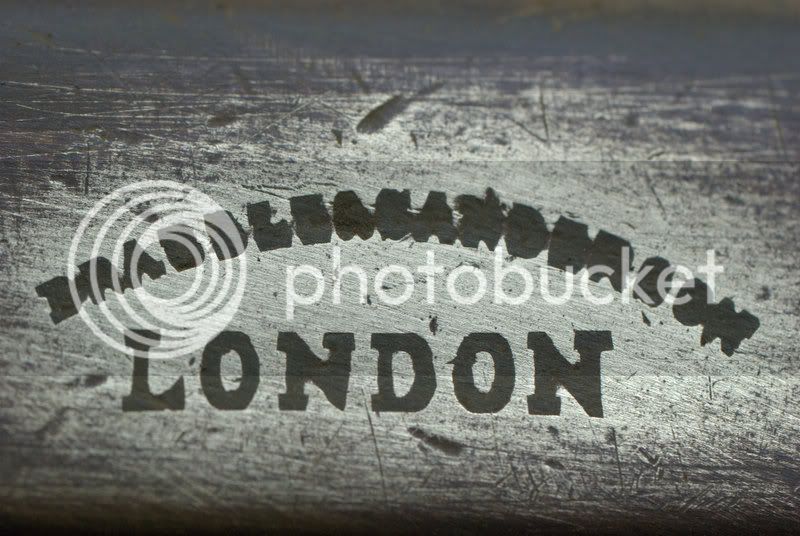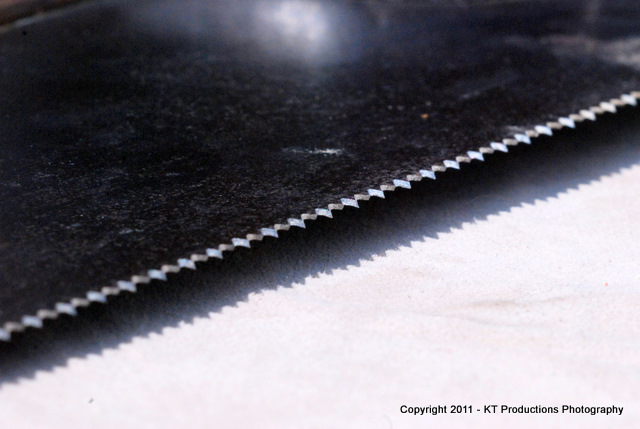jimi43
Established Member
I recently posted a group picture including a gorgeous little backsaw acquired from the estate of the famous taxidermist.... Roland Ward MORE INFO HERE
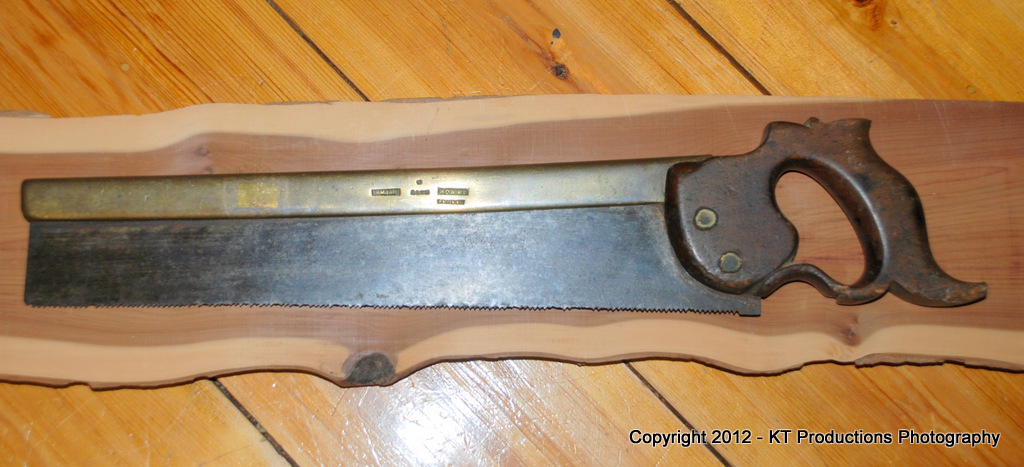
It is from the quite rare maker...Howel...or rather an apprentice after his death...one Joseph Vaughn Hill of Sun Street London.
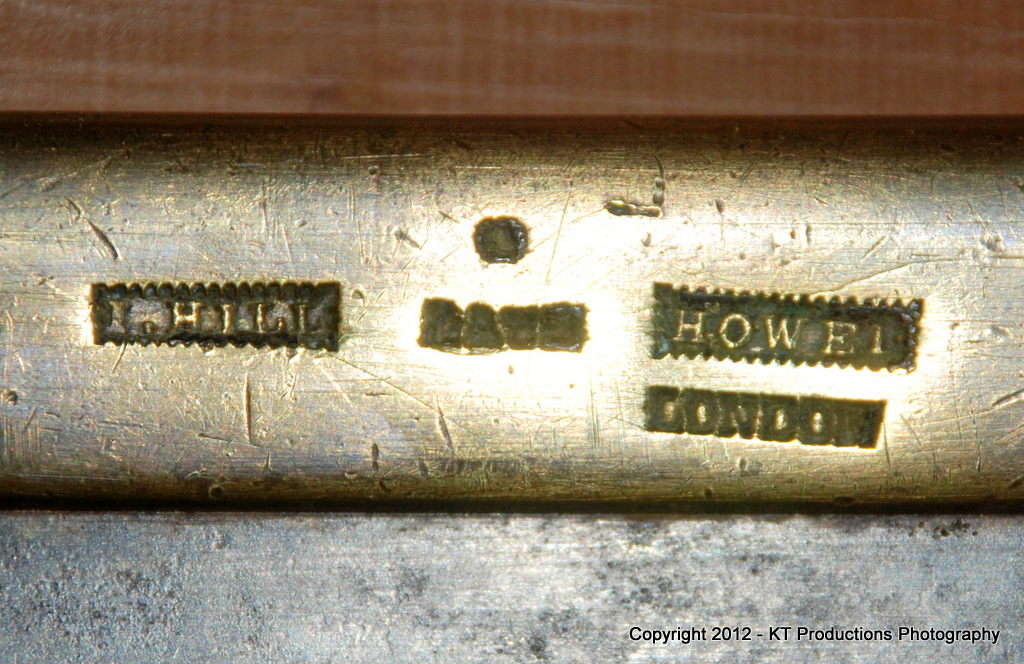
I thought I would start a discussion on this old gent....for a number of reasons which will become evident.
I know that Chris...(adidat)...found a far better condition one of this maker at a bootfair last year...
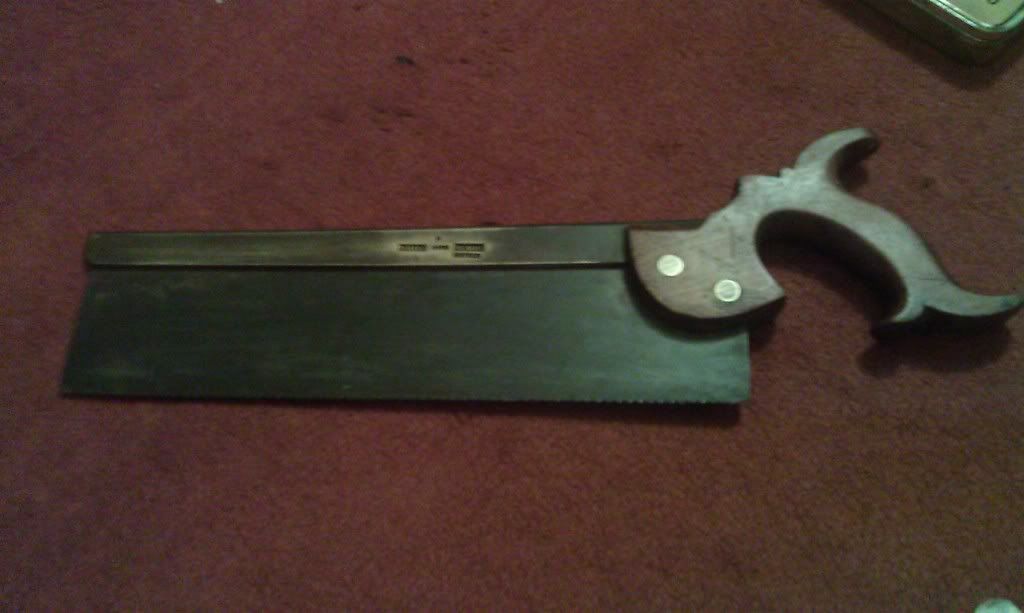
Click on the image for the thread.
In this thread I said that I would dearly love one of these little saws...and it has taken a year...but success at last!
Just to repeat the research I did at the time...
Subsequent to this research...and supported by the initial records...I was intrigued by the little dot above the word LATE in the group of incised and embossed stamps. Apparently it is not a dot but a SUN....and was used to indicate that it was at his shop in Sun Street...
Here he assembled saws from constituent parts already made by his old employer...J.Howel...and did so for quite some time relying on sales from the goodwill and reputation of the maker who gave him his skills.
Information about this "maker" is sketchy and rather contradictory in places...especially with regards to dating from the stamps. Clearly, this example was made after the demise of Mr Howel...so that sets a "from" date to 1840. As to the "to" date...I believe this to be relatively early.
There are a number of reasons for this...
Firstly, the use of the antiquated "I" instead of "J" for Joseph. And secondly...later models are stamped J.V.Hill...using the later initials.
My guess at this point is this was made almost immediately after 1840....
Now for my next discussion point. What to do with this saw.
The options are to keep it totally original and with all the war wounds. The teeth preclude the use of this saw....
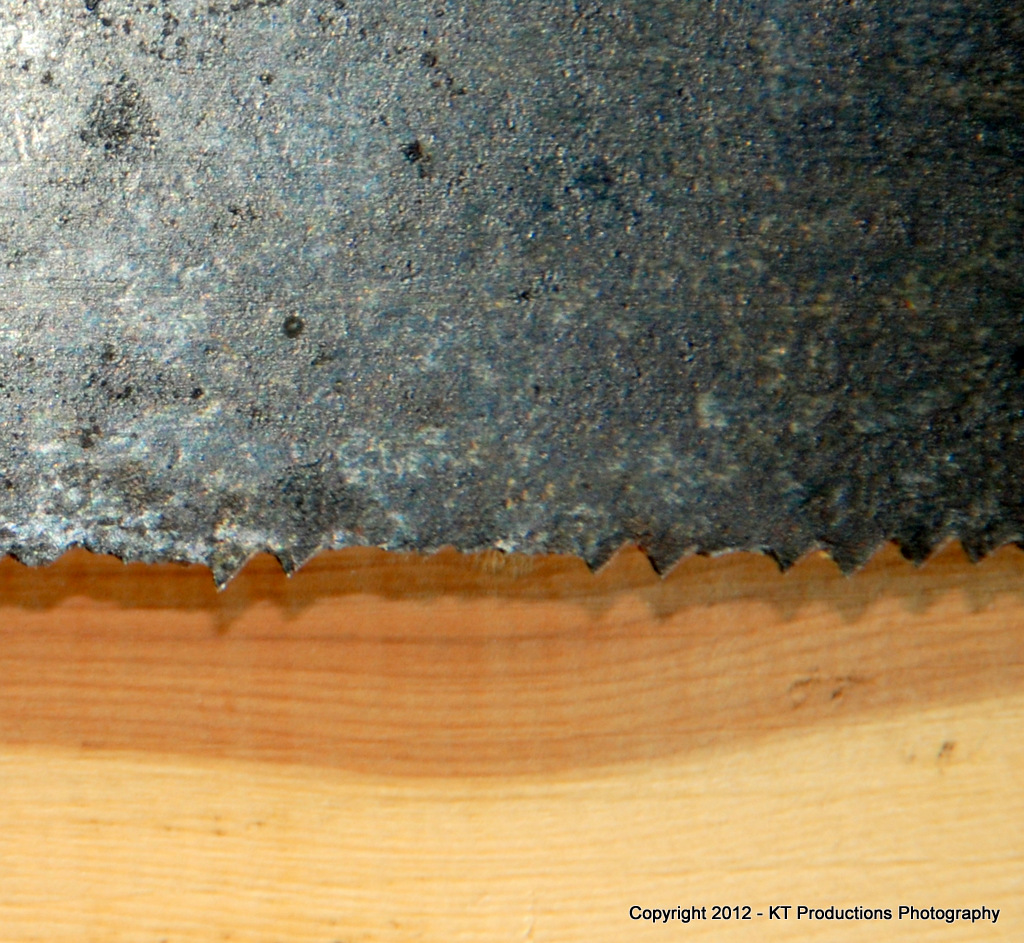
One can clearly see the "skip" nature of the teeth! :mrgreen: Some are good...others lower after poor sharpening and yet more...missing entirely in ones and twos or complete rows!
Then there's the issue of the handle.....
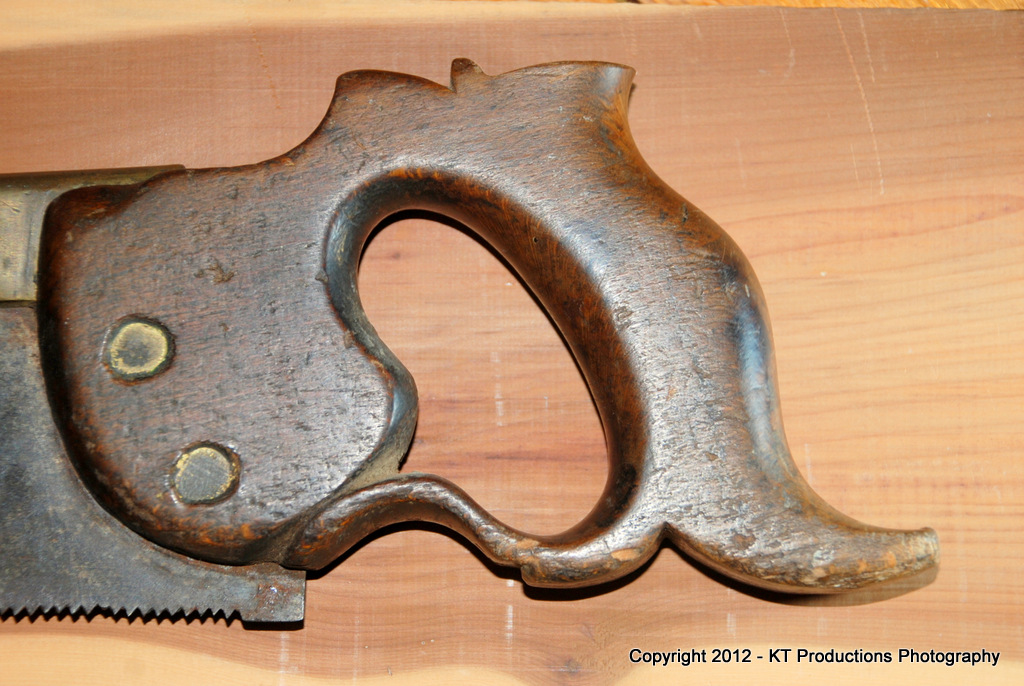
The worst damage is obviously the top horn....gone entirely. Closer inspection of the bottom horn reveals a lack of crispness...perhaps even reshaping from a small break long ago.
The second option is to have the teeth reworked and a full sharpen. I happen to know someone who would perhaps relish the challenge that this old boy would present...and judging by the last one I had done....would make a superb job of it. I could then just use it with pride and not worry about the handle.
Thirdly...get it sharpened AND fix that top horn. It is a difficult one....
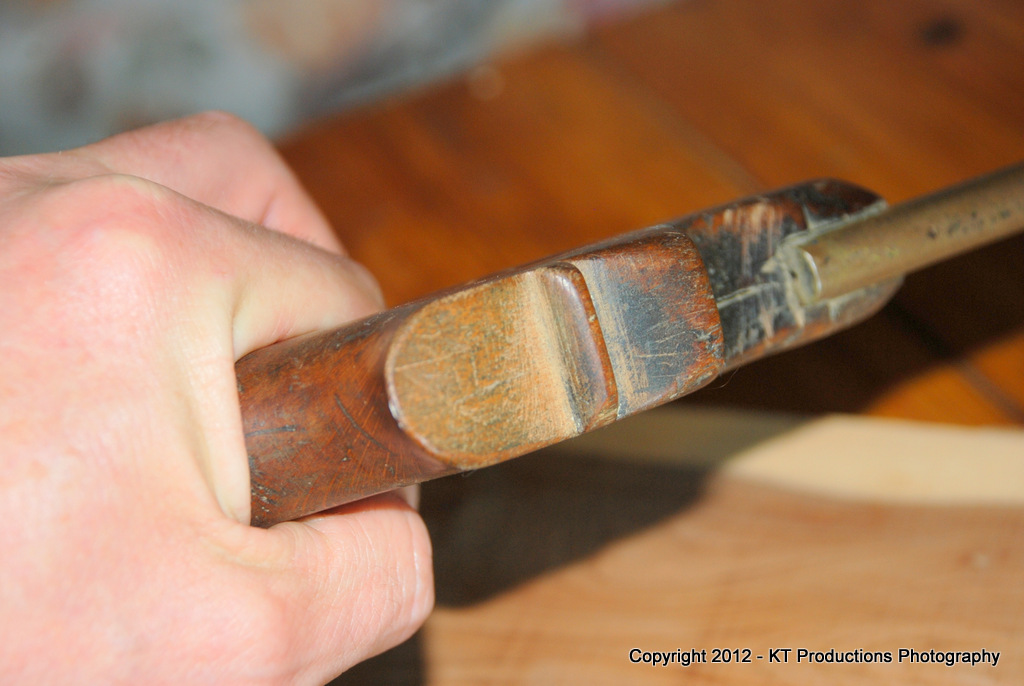
The break happened many moons ago. The owner has just trimmed it down neatly and just put it back to work. I am split on this one. I like the history of the damage...and it's certainly not uncomfortable to use...but it has lost that mojo that these beautiful twin horns have...with the lamb's tongue totally undamaged below. Help me jump off the fence on this one...I know I can repair this...almost invisibly...but should I? :?
Notice from this shot....
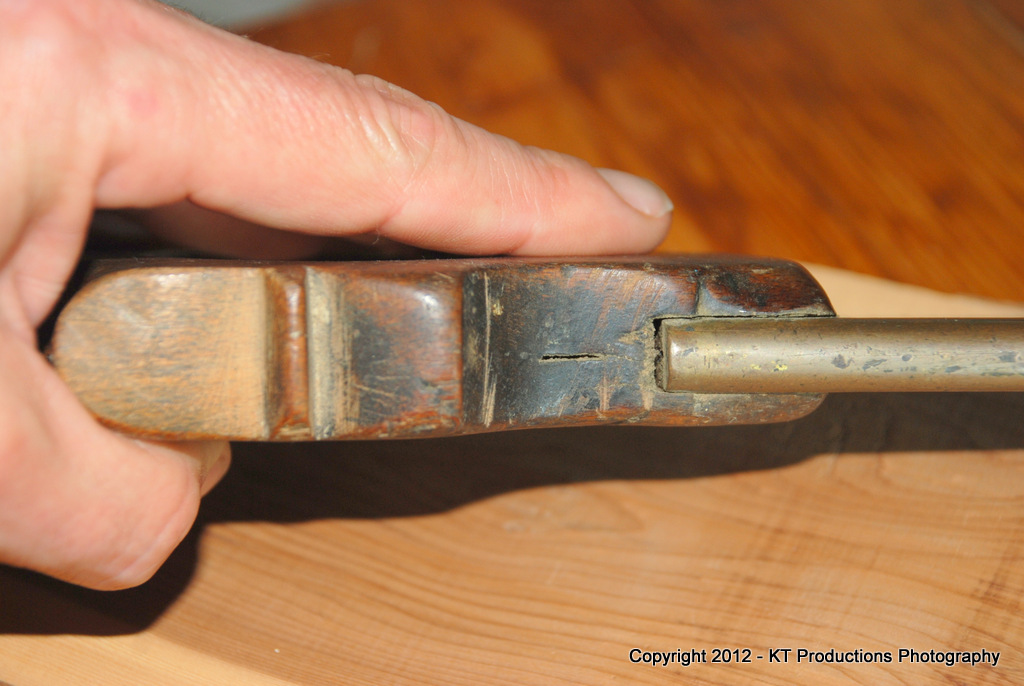
...that there is a distinct bias to the way the steel is fitted to this handle. I believe this is to hand the saw...and even more clearly the main owner was left handed....as am I. You can tell this because the indentation for the index finger pad is worn smooth on the upper edge (left side) in this picture...and it perfectly fits my finger.
This fascinates me....is it true or just supposition? Anyone know?
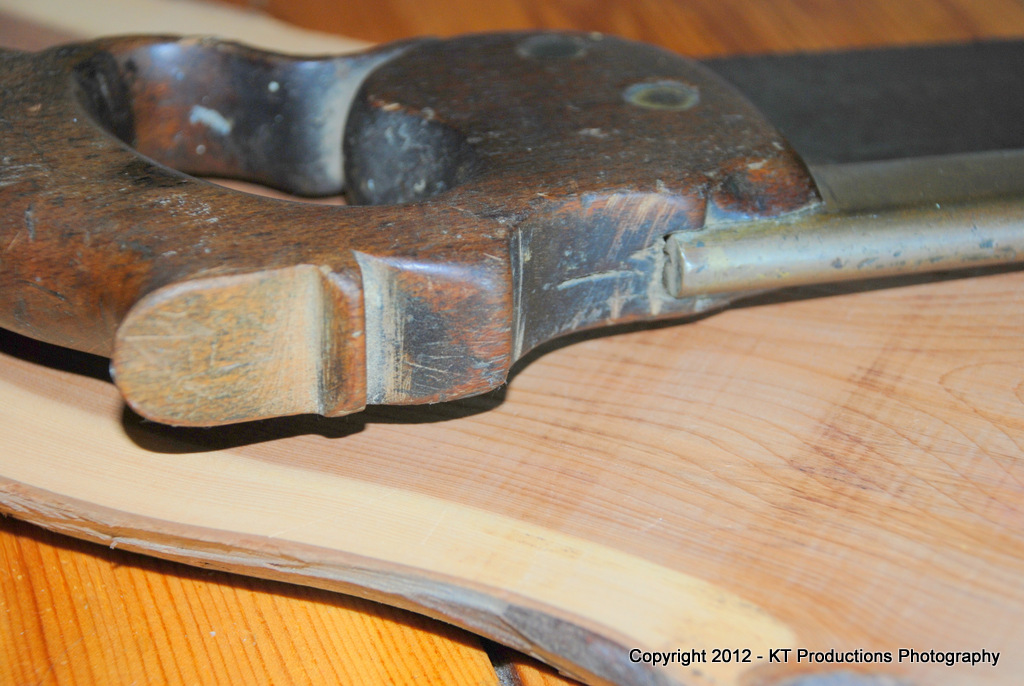
Just to finish off my first post....I have to say why I bought this saw in the first place.
I wanted a really damaged saw to break for the back so that I could make a mitre plane ala Bill Carter using the back bent to reveal the maker at the rear. I wanted a really interesting and old plane to do this with but all the above makes me think...this is not the donor. It's simply too beautiful and crying out for me to put it back to work. I think I should look for another to be that donor...perhaps one that is beyond repair...one with a little less mojo....and one that isn't left handed!!! :mrgreen:
Oh and just one small thing...click each photo for a hi definition version.
Over to you guys...discuss! 8)
Nite!
Jimi

It is from the quite rare maker...Howel...or rather an apprentice after his death...one Joseph Vaughn Hill of Sun Street London.

I thought I would start a discussion on this old gent....for a number of reasons which will become evident.
I know that Chris...(adidat)...found a far better condition one of this maker at a bootfair last year...

Click on the image for the thread.
In this thread I said that I would dearly love one of these little saws...and it has taken a year...but success at last!
Just to repeat the research I did at the time...
HILL, Joseph Vaughan LONDON
64 Cromer Street, Gray’s Inn Road [also given as Judd Street] 1834-1836
5 Chichester Place, Gray’s Inn Road 1839-1863
252 Gray’s Inn Road 1864-1909
Saw maker and tool dealer, but also produced many planes marked J.V.Hill; a letter head from his early days describes him as a wholesale saw manufacturer. He was foreman to J.Howell (Howell’s own invariable spelling), planemaker of Chelsea (1806-1840), hence the marks. His use of a zigzag bordered mark is exceptionally late; his marks on saw backs are invariably more deeply struck than almost any other maker’s. Recent research by Jeff Warner has shown that his prosperity (considerable: he died a rich man) was based on his business being close to the piano-making area of London, The longevity of the firm was due to its continuance under the same name for several years after Hill’s death.
Subsequent to this research...and supported by the initial records...I was intrigued by the little dot above the word LATE in the group of incised and embossed stamps. Apparently it is not a dot but a SUN....and was used to indicate that it was at his shop in Sun Street...
Here he assembled saws from constituent parts already made by his old employer...J.Howel...and did so for quite some time relying on sales from the goodwill and reputation of the maker who gave him his skills.
Information about this "maker" is sketchy and rather contradictory in places...especially with regards to dating from the stamps. Clearly, this example was made after the demise of Mr Howel...so that sets a "from" date to 1840. As to the "to" date...I believe this to be relatively early.
There are a number of reasons for this...
Firstly, the use of the antiquated "I" instead of "J" for Joseph. And secondly...later models are stamped J.V.Hill...using the later initials.
My guess at this point is this was made almost immediately after 1840....
Now for my next discussion point. What to do with this saw.
The options are to keep it totally original and with all the war wounds. The teeth preclude the use of this saw....

One can clearly see the "skip" nature of the teeth! :mrgreen: Some are good...others lower after poor sharpening and yet more...missing entirely in ones and twos or complete rows!
Then there's the issue of the handle.....

The worst damage is obviously the top horn....gone entirely. Closer inspection of the bottom horn reveals a lack of crispness...perhaps even reshaping from a small break long ago.
The second option is to have the teeth reworked and a full sharpen. I happen to know someone who would perhaps relish the challenge that this old boy would present...and judging by the last one I had done....would make a superb job of it. I could then just use it with pride and not worry about the handle.
Thirdly...get it sharpened AND fix that top horn. It is a difficult one....

The break happened many moons ago. The owner has just trimmed it down neatly and just put it back to work. I am split on this one. I like the history of the damage...and it's certainly not uncomfortable to use...but it has lost that mojo that these beautiful twin horns have...with the lamb's tongue totally undamaged below. Help me jump off the fence on this one...I know I can repair this...almost invisibly...but should I? :?
Notice from this shot....

...that there is a distinct bias to the way the steel is fitted to this handle. I believe this is to hand the saw...and even more clearly the main owner was left handed....as am I. You can tell this because the indentation for the index finger pad is worn smooth on the upper edge (left side) in this picture...and it perfectly fits my finger.
This fascinates me....is it true or just supposition? Anyone know?

Just to finish off my first post....I have to say why I bought this saw in the first place.
I wanted a really damaged saw to break for the back so that I could make a mitre plane ala Bill Carter using the back bent to reveal the maker at the rear. I wanted a really interesting and old plane to do this with but all the above makes me think...this is not the donor. It's simply too beautiful and crying out for me to put it back to work. I think I should look for another to be that donor...perhaps one that is beyond repair...one with a little less mojo....and one that isn't left handed!!! :mrgreen:
Oh and just one small thing...click each photo for a hi definition version.
Over to you guys...discuss! 8)
Nite!
Jimi


































